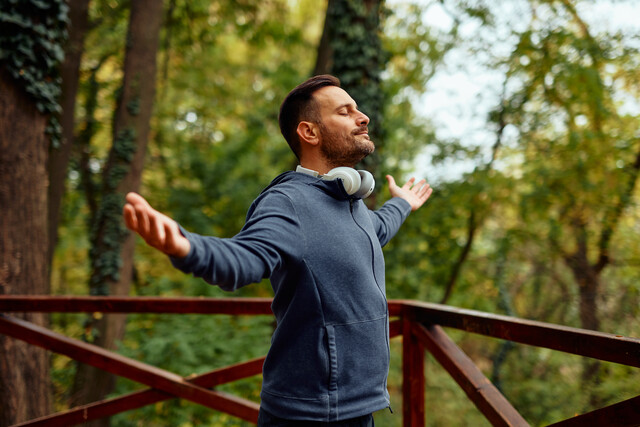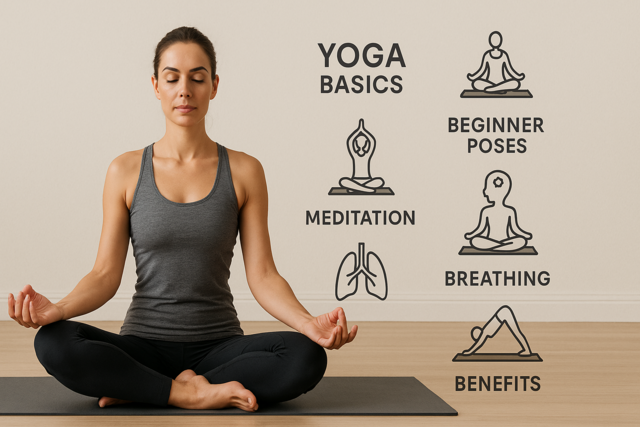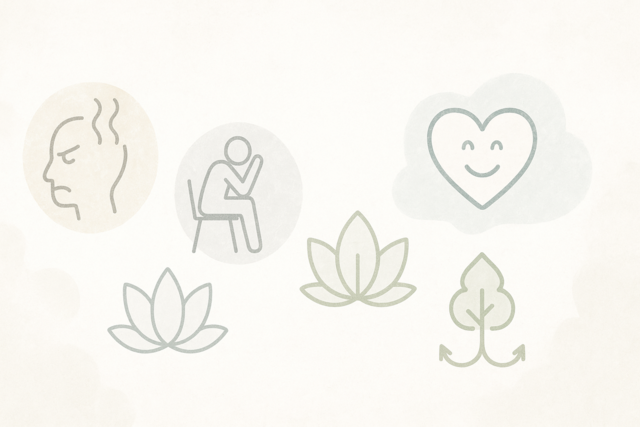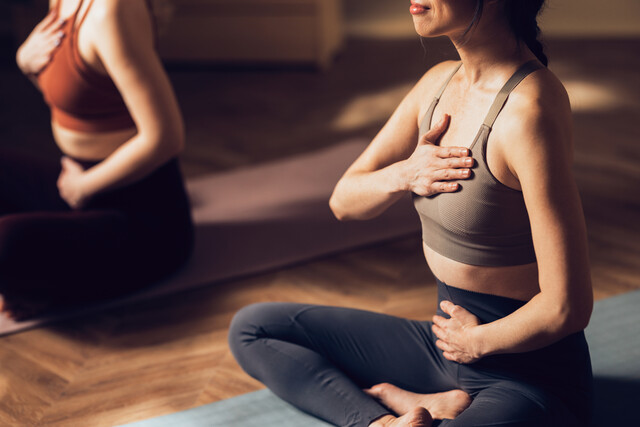We realize that performance is quite a broad term, and can mean a variety of things. What we mean by performance breathing here is breathing for any type of activity in which you have a goal you are trying to achieve.
| For example: - Playing your best in sports - Controlled breathing in singing - Emotional access and fighting stage fright in theater - Overcoming the fear of speaking in public, and conveying a message successfully |
Perhaps the most important thing you can do in order to perform well is to prepare well.
A huge key aspect of preparation is practice, or rehearsal. Just like practicing free throws will most likely increase your rate of success, practicing controlled breathing will also prepare you for performing well when you need it.
So when you are practicing a sport or rehearsing a play or speech you have to give, do not overlook the breathing aspect of it. We tend to focus a bit too much ahead of ourselves: "My focus is to deliver the perfect speech," "I'm focusing on becoming a better player." That is fine, but how are you going to achieve it? By focusing on the smaller bits of your larger goal.
If you ignore important aspects of performance when you practice, you can't expect them to magically work out when the time comes for you to put them into action.
One huge aspect of performance preparation is visualization.
Visualization is done by professional athletes, singers, actors, and others.
How do you do it?
It's very easy and efficient. Visualizing is basically talking yourself through � or "seeing" yourself through � an event that has not yet taken place. Here are the central steps to visualization:
|
- Find a quiet place where you can concentrate without any disturbances.
- Close your eyes, take a deep breath, and start focusing on your breathing, relaxing it and bringing it to a natural pace. - Once you feel relaxed, begin to picture the event in which you are going to perform. This picturing should start before the event itself: For example, if you are visualizing a soccer game, picture yourself in the locker room, making your way to the field, warming up� all the things you do before the game. If the event is a public speech, picture yourself getting to the place, driving or walking towards it, waiting to be called to speak. |
Very important: When you do visualizations, picture everything in first person, that is: through your own eyes. Though it's easier to picture yourself "from the outside," it won't be nearly as effective as if you picture an event in the actual way you are going to experience it in real life.
|
- Seeing this event through your eyes (in your mind), go through your performance. Imagine yourself playing the game. Imagine yourself saying the words of your speech. Imagine yourself acting out the play, or singing through your song. - You may notice that your breathing will start to change. Your brain is sending signals to your body, which in turn responds to adapt to these signals � even if they are "just pretend!" Let this happen. As we have mentioned before, breathing preparation is also part of your general preparation. - When you picture your performance, see everything going perfectly, everything working in your favor. But here and there, put an obstacle to this (for example, you get the ball taken from you), and respond to it by picturing yourself transposing the obstacle (i.e. getting the ball back). |
What is the reasoning behind all this?
Visualizing is effective for a very simple reason: If you go through an event in your head, by the time the "real" event happens, you have already "experienced" it, and therefore will just have to perform it again!
If there are obstacles you have to overcome, you will know how to, because you have already done so in your visualization.
Note: Some people have a hard time just concentrating and just seeing this in their heads. Another way you can do this is through an audio-led visualization. Record yourself speaking through the moments of your event, just as you would like it to happen. If you don't like hearing your own voice, write a small script and have a friend record it for you. Then go through the same steps we have described, but instead of just picturing, you will be led through the motions of whatever it is you are preparing for.
Warming up is an essential aspect of performing well.
If you play sports, have you ever run out of breath within the first five minutes of a game? It is quite a common thing to happen, and it's caused by not warming up, or not warming up properly or long enough.
If you sing, have you felt that sometimes you reach a note wonderfully and finish a musical phrase with plenty of breath left, and other times you can't seem to arrive at the same note, or quickly run out of breath?
Warming up your body and your breathing will make a significant difference in your performance.
As a rule of thumb, your warm-up should be no less than 10 minutes. Waking the body up is very different than warming it up.
|
- Stand with your feet well balanced on the floor, hip's width apart.
- Stand straight, with soft knees (not over-extended, so just slightly bent), straight back and neck, with your head gently floating on top. - Slowly move your head from side to side a few times. - Now slowly look up at the ceiling and down at the floor. When you look up, careful not to put too much weight on the back of your neck, and let your mouth open naturally. When you look down, gently move your chin toward your chest. - Slowly circle your head to one side, and then the other. When you finish, go back to your initial position. - Circle your shoulders, first to one direction, then to the other. - Do the same with your arms, and then with your wrists. - Notice your breathing. Now reach over to your left side with your right arm over your head, stretching your side. When you return to the initial position, feel the difference between the side you just stretched and the side you haven't. Repeat with opposite sides. When you are finished, notice how your breathing feels fuller, more active in the area of your ribs. - Circle your hips around, first to one side, and then to the other. - Do the same with your knees, bending them a little further and placing your hands on your kneecaps. Be mindful of this one if you have knee problems. - Circle and shake your ankles, one at a time. - Move back and forward on your feet, exploring different points of balance. - When you are finished, shake it off (literally, shake yourself a bit!), then, standing still, notice how you're breathing now. Probably a little faster, more aware, with more purpose and control! - Follow this by doing a few spinal rolls (when you "roll down" every vertebrae, starting at the top of your neck, until being "crouched over" at your tail bone, and roll up doing the reverse process). Here, play with different speeds and breaths. Try breathing in when rolling down, and out when rolling up, and then try breathing out when rolling down, and in when rolling up. Which feels more natural? - At the end, once again, take some time to stand still and straight, paying attention to how your breathing has changed. |
This is a basic warm up that can be done for any activity, and will get your body feeling warm and energized, as well as give you the controlled, purposeful breathing you will need to perform to the best of your abilities.
Of course, there are different paths to follow after this initial routine, depending on your activity. For sports, you will probably want to jog or run a bit; for singing/acting or giving a speech, you will want to let out long breaths, exhaling sounds of "z," "s," "dj," and "f"!
Giving Voice to Your Breathing
Breath and voice are intimately connected: Our breathing responds and reacts to our thoughts and feelings!
This connection, however, is not enough to allow you to use or breathing to its full capabilities, nor to use your voice at its maximum potential.
Speaking and communicating are essential to our lives; having the ability to control our breathing and our voice are valuable and most useful assets. If we connect to our own thoughts and feelings through breath, these thoughts and feelings will most likely also be connected to the way we speak them, giving whoever is on the other side of this communication line an accurate connection to what you are trying to communicate.
| In other words, being in control of your breathing patterns will give you control over: - Breath and (consequentially) voice supply - Breath and (consequentially) voice support |
What does that mean?
Being able to control breath supply means being able to control how much air we let out from our lungs, and at what type of flow we do so. This allows us to sustain vocal sounds for the amount of time we desire -- short or extended.
Being able to control breath support has to do with controlling the intensity of how air comes out of our lungs to support the vocal sounds we want to make -- basically, how quiet, loud, weak, or strong we want certain sounds to be.
Why?
Our voice is nothing more than air shaped into sound waves. That is done by our vocal folds, which are located just behind the Adam's apple. ("Eves" also have them!) The two folds are made of fibrous tissue, and attach to different cartilages in the larynx. (Gently place your fingers on your throat, right around the middle; swallow and you will feel your larynx moving up and down.)
| Did you know that our vocal chords' first duty is to protect our lungs, and not to create our voices? |
We can open and close our throats with our vocal folds, therefore being able to control whatever comes into our lungs, and whatever comes out of them. For example, think about when food goes down the wrong pipe; by the way, this is the actual medical term for it!. When this happens, our vocal folds shut down, blocking the middle of the windpipe. This, in turn, is likely to make us cough or clear our throat, which makes our vocal folds vibrate and move up whatever is in the wrong pipe. The tongue then pushes it down the right way, which is the way of the esophagus. Likewise, our vocal folds open up in order to let air in and out so we can breathe!
How about speaking?
The sounds we make happen when air passes through the vocal folds at certain specific amounts of pressure. Our vocal folds are brought together in a similar way that we bring together our lips: try blowing air through your lips, leaving them loose. You will find that according to the amount of pressure your lips make against each other and the amount of pressure of the air coming through them, they will open and close accordingly, as well as make or not make any sound. The same thing happens to our vocal chords, they open and close as we speak, going through vibrations determined by our breath supply and support.
- If you want to make a long sound, should your breath supply be short or long? Do you need to provide a short or long supply of pressure?
- If you want to make a very strong sound, do you need more or less air pressure? More or less support?
|
Creating pressure can be done in two ways: 1- Using the muscles involved in breathing to make air flow for a longer period of time and in a stronger manner. |
* Think of blowing on hot food: how do we shape our lips? Is there more pressure behind our lips if we tighten the space between them? What would happen to the pressure if we tried to blow on hot food with our mouths wide-open? Even though the same amount of air could be sent out, the pressure would be much smaller!
The much healthier choice is to utilize all the muscles involved in breathing, in order to achieve a maximized and fuller airflow. This is why exercising and being aware of those muscles is so important � they have a direct effect on the way you supply and support your voice and breath.
Breathing fully from the source of breathing (the muscles we have mentioned before) is not only the healthier choice, but also one that gives you a lot of control over the intensity, volume, and power of the things you say, allowing you to free your natural voice, the voice you have when you are using it at its full capabilities.
|
Did you know that:
Our belly muscles are the most important ones when it comes to vocal supply and support? Our abs are organized in four layers, the most outer ones being the famous, desirable (and usually hard to get!) six-pack. The layers behind the six-pack are the most useful when it comes to breathing: They connect and wrap around our lower ribs, pelvis and lower back, meaning they are highly involved in the pushing and pulling of our lungs, which, as we have seen, is what "causes" us to breathe. The fact that these abdominal layers extend to such different areas of belly area means we can, indeed, actively involve our sides, back, and even pelvis in the process of breathing. That is precisely why a lot of exercises rightfully focus on developing awareness and control of these muscles! A controlled and constant pressure against our lungs will provide controlled and constant air pressure, necessary to gain control over our breathing and vocal abilities. |
Remember: We are born with these abilities! Learning this is not like learning to drive, for example. Learning the art of breathing isremembering, relearning, and reconnecting to something you already know!
When they work together, we have a wide range of means to express ourselves in a truthful manner.
| Quick Exercise: - Big sigh! No voice. Do it. Consider what just happened: You just inspired a large amount of air, and let it all out quite quickly. - Now do the same thing, only this time when you sigh, do it with sound. Listen closely: How long did it last? What happened to its power as the sigh ended? - This time, instead of sighing, with the same amount of air you have been breathing in, just make an "aah" sound. How long can this one last? Much longer, right? How about its intensity? Is it more or less constant? |
Experiment with letting out "aahs" in different ways. Try supplying air from your belly, or from your chest only, and from both. How does that change the intensity and length of the sound?
If you feel adventurous, try relaxing tension and involving your back, ribs, and pelvis into your breathing. Is it a freeing sensation?
Open your body to your breath and your voice. You will be able to breathe fully and express yourself in a truthful manner.



























